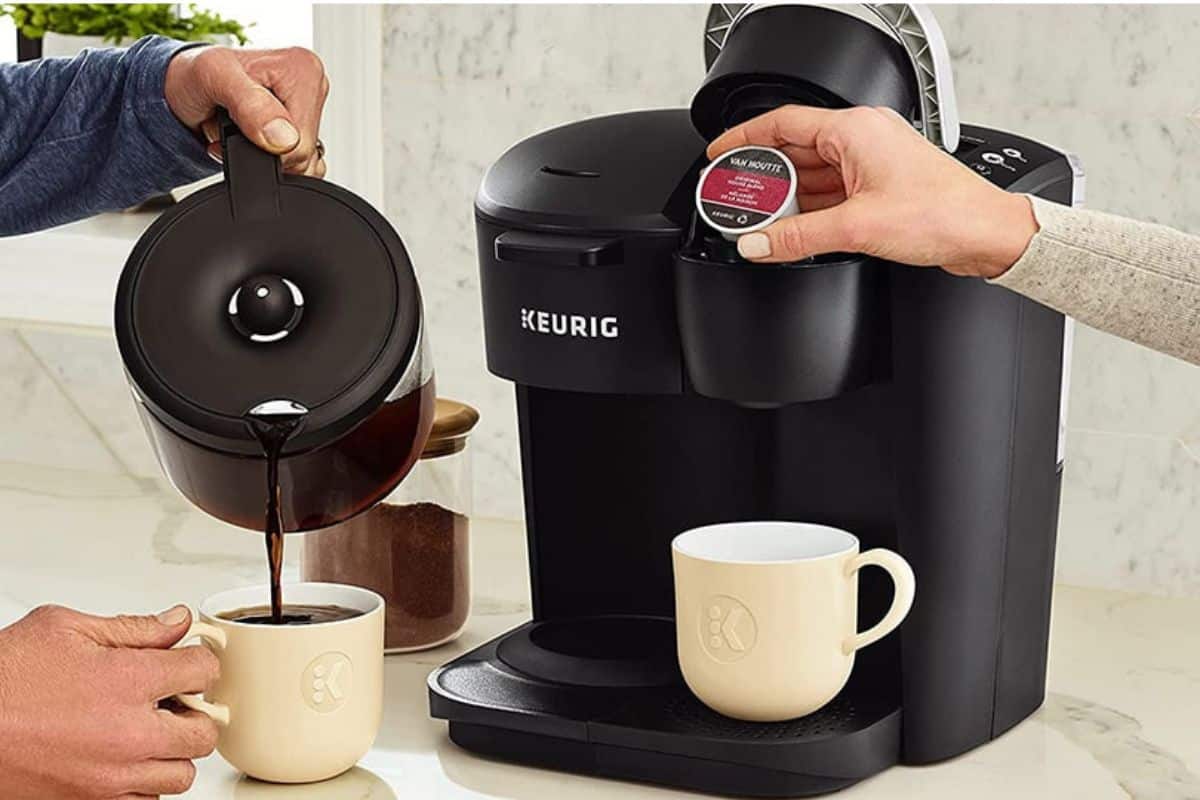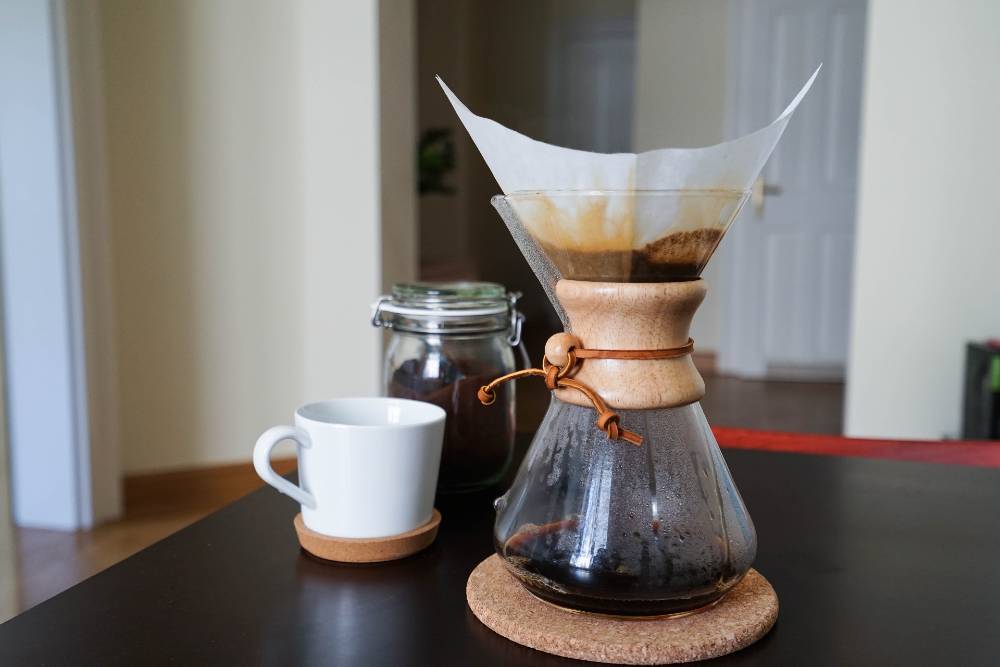Have you ever noticed that some bags of coffee in stores have espresso written on them? I’ve noticed this for years now, wondered what the difference was, and just never looked into what made an espresso bean and not any other kind of coffee bean. Let’s find out!
Espresso beans are roasted darker and ground much finer than regular coffee beans.
Espresso is not just in the brewing process. Making the best espresso to rival a top barista, also depends on the bean blend, the roast, and the grind.
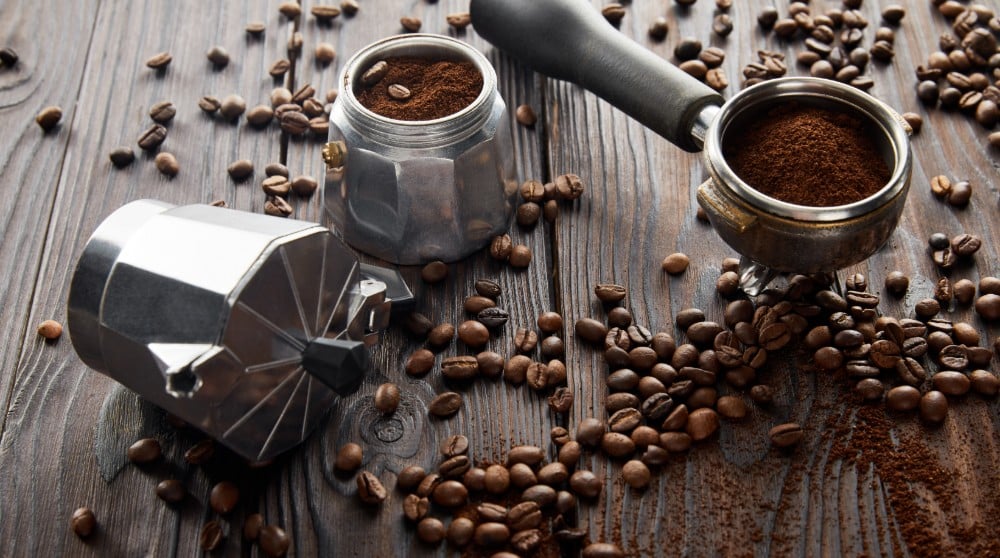
The Difference Between Espresso Beans and Regular Coffee Beans
So what really makes an espresso bean and a regular coffee bean different? They’re both coffee after all!
The Blend
Coffee beans are never just any old coffee bean. How your cup of Joe turns out depends on the type of bean itself just as much as what you do with it.
Coffee bean sellers will take beans from different growers, and even different species of beans themselves (Arabica beans or robusta beans), and mix them together in different proportions rather than using a single origin bean (more on single origin and blended coffees here). They aim to get a really consistent flavor of blend. So that customers know what to expect from their product.
Having so many different blends of coffee to choose from really opens up a new dimension to coffee flavors.
Both espresso beans and regular coffee beans will be blended in a particular way by the seller.
In my experience, I found that espresso blends in Italy often contained a strong proportion of robusta beans. It might seem strange at first, some people consider robusta to be a lower-quality bean. Italian espresso blends tend to like including robusta beans with arabica beans because it brings an extra dark flavor, a higher caffeine content, and creates more crema in the cup.
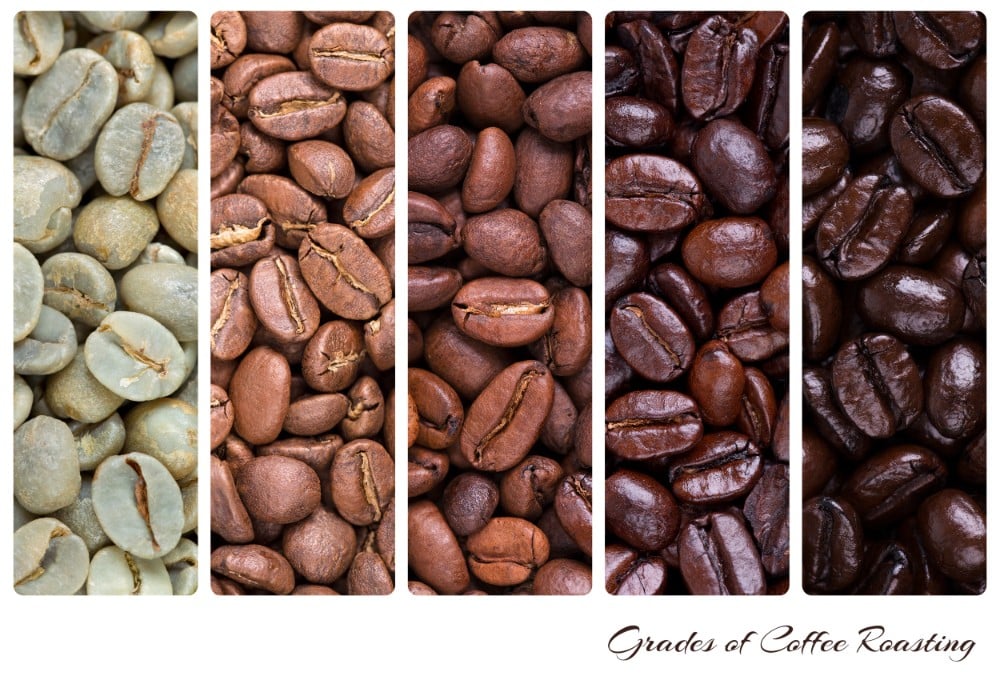
The Espresso Roast
Espresso beans are roasted for a much longer time, at higher temperatures, than regular coffee beans. The coffee aficionados call this a darker roast. Dark roasted coffee beans have a flavor that is much stronger and rich in caramel, chocolate, and woody notes due to the longer, hotter roasting process.
As well as being a dark roast, these beans are much more oily. They have much stronger, single-note flavors and are lower in acidity compared to a light roast or medium roast. Pretty much just as you would expect from an espresso.
I always thought that espresso roasted beans would have higher caffeine content but when you compare espresso beans vs coffee beans, higher temperatures and a longer time at the roasters also break down the caffeine in the beans.
So as strange as it might sound; espresso beans actually have slightly less caffeine content. That said, it probably won’t be significantly less. We all know espresso is one of the best coffee types to really make you get up and go!
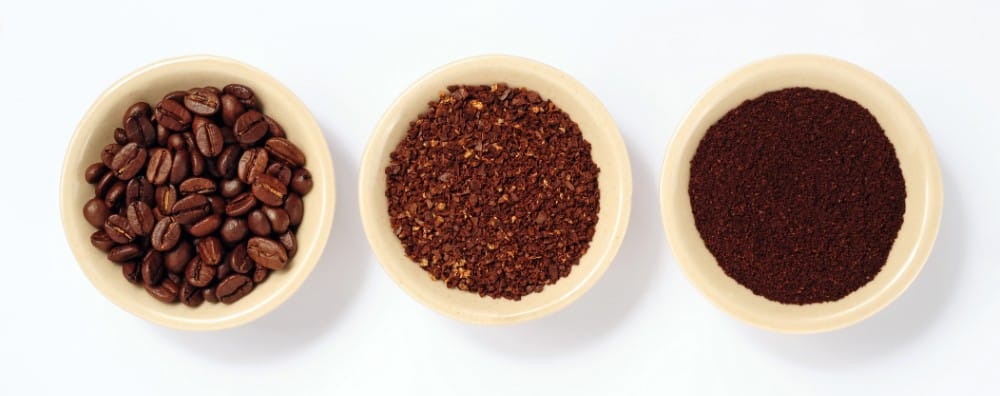
The Espresso Grind
Mastering your coffee grind is a true sign of coffee know-how.
Espresso beans are ground into a much finer powder. A burr grinder is always used to achieve a fine grind and an even consistency.
To make an espresso, the ground beans need to be compacted tight into a portafilter before water is pushed through it at high pressure. To make them hold together when compacted, a finer grind is key.
With a drip, immersion coffee, or cold brew the steeping process takes much longer. People usually opt for a coarser grind. A bag of regular pre-ground coffee beans will definitely be coarser than a bag of espresso coffee.
So, in a metaphorical sense. The difference between the two coffee grinds is a bit like the difference between sand and gravel.
The difference between Espresso and Regular Coffee
Now we know what makes an espresso coffee bean and a regular coffee bean, the next step in the coffee process is the different brewing methods.
Drip, Pour Over, and Immersion Brews
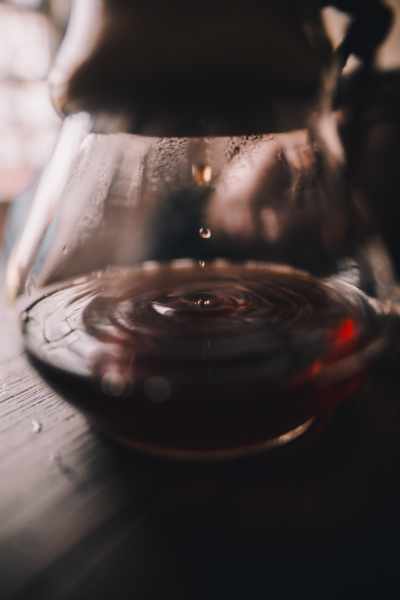
These are essentially any method for brewing coffee that doesn’t involve pressure to make your coffee drinks.
Whether it is letting the beans stew in water like with a french press, or letting it trickle through the ground beans to give a cup of drip coffee, these methods make a slow and milder flavored coffee. They are also usually made in much larger volumes than espresso drinks.
Espresso
Espresso brewing is all about speed, an essential factor in busy coffee shops. Express-o. How can you speed up brewing a coffee? That’s right, ram the water through those ground beans with as much pressure as you can! About 9 Bars of pressure to be exact.
An espresso machine is the only brewing method that can achieve these high pressures and this is what helps speed up the extraction process.
A shot of espresso is always made quickly and in small quantities. Surely that can’t be all that makes an espresso an espresso though! You’re right!
Crema is possibly the most essential aspect of an espresso. It is the light-colored frothy layer on top of an espresso that looks like, well, cream.
What is Crema?

The crema is made when the hot pressurized water hits the compacted coffee grounds. The hot water causes a load of CO2 to be released from the ground beans. The combination of heat and CO2 causes oils in the grounds to emulsify.
Simply put, crema really is very similar to cream. It’s essentially whipped fats.
Don’t be worrying about calories though. An espresso still only has about 1 calorie.
Without crema, espresso would just be a small shot of drip coffee.
Can I Use Espresso Beans to make Regular Coffee and Vice Versa?
You can absolutely use espresso beans to make any kind of regular coffee. Likewise, no one is stopping you from using regular coffee beans to make an espresso.
These different beans are just made to be slightly better at making the different types of coffees. The coffee you would get if you, for example, used espresso beans in a french press would be more likely to be particularly strong and maybe a bit over-brewed.
Because the espresso beans are finer, the coffee flavors are going to brew out of them much quicker. If you’re using a french press the coffee will end up tasting quite bitter. Also, Because the grounds are finer, they will be more likely to leak out through the mesh filter and end up in your mug. Chewy.
F.A.Q.s
Can you use coffee beans as espresso beans?
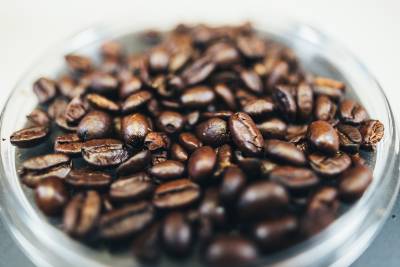
Yes, you absolutely can use regular coffee beans as espresso beans. It might not be perfectly on point but grind them finely and you can make a decent-tasting espresso with regular coffee beans from a grocery store.
I will always recommend getting fresh coffee beans from your local coffee roaster if you can. I promise, it will make a real difference.
Are espresso beans stronger than coffee beans?
Espresso beans will be a darker roast and ground finely, so the flavor will likely be stronger. Although, due to the darker roast, the caffeine content of the coffee beans themselves is likely to be lower than regular coffee beans.
What are the different types of espresso beans?
Espresso beans can be made from any kind of coffee beans. The type of beans used will be mixed together by the roaster.
What are the differences between coffee beans and espresso beans?
Espresso beans will have a dark roast, and (if you’re buying pre-ground) they will have a fine grind. They are also likely blended specifically for making espresso.
So, What Have We Learned?

We have learned that there is actually quite a significant difference between espresso and regular coffee beans.
Espresso beans are usually a different blend, they are roasted longer and ground finer. Espresso coffee produces a drink that tastes much more intense and powerful despite the smaller volume. The ideal espresso is brewed quickly and at high pressure and the presence of crema is a good indicator we have a perfectly brewed beverage.
The rich flavors of the dark coffee roasts stand up really well when combined with milk to give drinks like lattes and cappuccinos.
There are (thankfully) no laws when it comes to coffee brewing so you can choose whether or not you are happy to mix and match beans or just stick to the recommended blends. Ultimately, as long as you are pleased with the final product, then that’s all that matters. It’s your cup of coffee after all!



